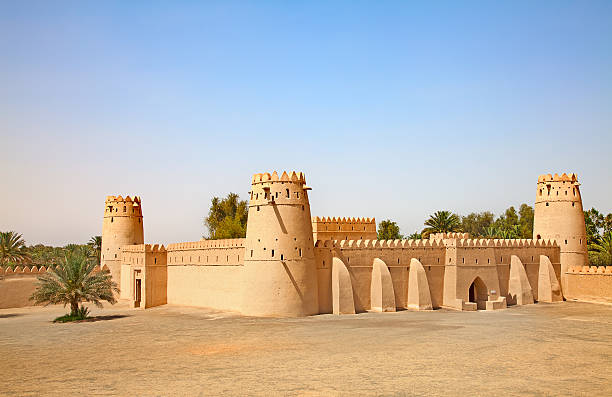
If you’re looking for a fun, educational, and affordable day trip in the UAE, Sharjah Desert Park is a perfect choice. Located just outside the city. It is a large wildlife, education, and heritage complex that blends nature, culture, and conservation in one peaceful destination.
Whether you’re a tourist, resident, school group, or family with kids, this park offers something for everyone.
What is Sharjah Desert Park?
Sharjah Desert Park is a 1 km² reserve located around 30 km east of Sharjah city on the Al Dhaid Road (E88), just off Interchange 9. It was established in 1995 by the Environment and Protected Areas Authority (EPAA) to protect desert animals and plants, while also educating the public about the region’s natural environment.
Over the years, the park has become a major eco-tourism and educational destination in the UAE. The locals also call it Sharjah police desert park because there is a police training center nearby and this park is heavily patrolled, an added advantage of security to families and school tours.
What to See at Sharjah Desert Park
There are four main zones within the park, each offering a different experience:
Arabian Wildlife Centre
This one of the greatest features of the park-and, and a place popular with families. It is the only indoor zoo in the UAE, built to mimic the natural habitats of desert animals. All enclosures are designed to keep animals safe and stress-free, while allowing visitors to get close in a safe way.
Here’s what you’ll find:
- Arabian leopards (critically endangered)
- Arabian oryx, gazelles, sand cats
- Wolves, foxes, hyenas
- Reptiles: snakes, lizards, chameleons
- Nocturnal animals in dimly-lit environments
- Birds, rodents, bats, and insects
The building is air-conditioned and suitable for year-round visits.
Islamic Botanical Garden
The garden is a well-landscaped park with more than 100 plant species mentioned in the Holy Quran and Hadith. Plants include
- Figs
- Olives
- Pomegranates
- Henna
- Saffron
There are fountains, pools and sitting areas, as well as shaded walkways in the garden, are ideal to get a glimpse of a calm walk or short meditation.
Educational boards explain the religious and medicinal uses of each plant.
Children’s Farm (Petting Zoo)
Designed for younger visitors, this zone allows children to interact with friendly farm animals like:
- Sheep, goats, rabbits, ducks
- Arabian horses and camels
Kids can pet, feed, and learn about the animals. There are also:
- Pony and camel rides (especially on weekends)
- A small children’s library
- Storytelling and educational workshops
It’s a safe, joyful, and interactive area for children to have fun while learning about farm life.
Natural History & Botanical Museum
This museum demonstrates the process of life evolution, geology and desert science interactively. Visitors can explore:
- Fossils and ancient desert animals
- Meteorites and rock formations
- Desert plants and their survival techniques
- Animal skeletons, insects, and microorganisms
Park Timings
Sharjah Desert Park operates on the following schedule:
- Sunday, Monday, Wednesday, Thursday: 9:00 AM – 5:30 PM
- Saturday: 11:00 AM – 5:30 PM
- Friday: 2:00 PM – 5:30 PM
- Tuesday: Closed
Entry Fees
The ticket includes access to all four areas and is very affordable:
- Adults (13+): AED 15
- Children (under 12): Free
- Students (12–16): AED 5
How to Get There
By Car:
- Take the E88 Al Dhaid Road from Sharjah or Dubai.
- Exit at Interchange 9 and follow signs to the park.
- Free parking is available onsite.
By Taxi/Ride-Hailing:
- Uber or Careem can take you directly from Sharjah or Dubai.
By Public Transport:
- Take a bus to Sharjah Airport or city center, then use a taxi to reach the park (about 20 minutes away).
Why Is It Called “Sharjah Police Desert Park”?
Some people refer to it as Sharjah Police Desert Park because it’s located near a police training zone. You may notice police presence or patrols in the area, especially during peak school trip days or holidays. This makes the park very safe, especially for families with children.
Best Time to Visit
The best months to visit Sharjah Desert Park Sharjah are:
- November to March, when the weather is cool (18°C–28°C)
- Winter holidays and weekends are popular but not overly crowded
During summer, focus on indoor areas like the Wildlife Centre and Museum, which are fully air-conditioned.
Facilities and Services
- Café and refreshment areas
- Gift shop for eco-friendly souvenirs
- Clean restrooms
- Prayer rooms
- Wheelchair-accessible pathways
The park is well-maintained, with shaded seating areas and plenty of space for picnics or relaxation.
Who Should Visit?
- Families with children
- School groups and educators
- Tourists interested in nature, culture, and wildlife
- Wildlife photographers and researchers
- Anyone looking for a peaceful and educational day out
Travel Tips
- Arrive early to enjoy all areas at your own pace
- Dress comfortably and wear sunscreen if visiting in warmer months
- Bring water and snacks (though food is also available inside)
- Check for any ongoing workshops or guided tours
- Respect the animals and plants—no littering or feeding without permission
Nearby Attractions
If you want to explore more of Sharjah, here are a few places near the park:
- Sharjah Discovery Centre
- Sharjah National Park
- Classic Cars Museum
- Sharjah International Airport
Final Thoughts
Sharjah Desert Park is one of the best hidden gems in the UAE. Whether you’re interested in wildlife, desert plants, Arabian culture, or simply want to enjoy a quiet day out with your family, this park has it all.
It’s safe, affordable, and rich in educational value. So next time you plan a trip, remember to include Sharjah Desert Park Sharjah—also known by some as Sharjah Police Desert Park—on your must-visit list.
